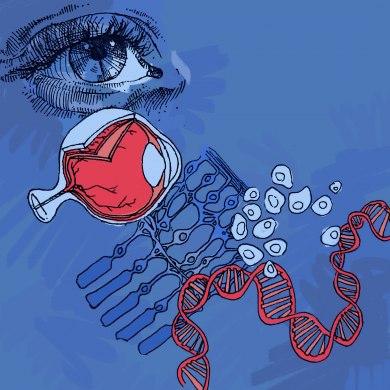Every week our Research Editors highlight a few of the latest headlines in science news and explain why these pieces are interesting and applicable to our classes at UC San Diego. If you find an engaging science article, share it with us on our Facebook page and your highlight may just be featured!
Spinning-Disk Microscope Offers Window Into the Center of Cell | Science Daily
A newly-discovered process is allowing scientists to observe the tiniest of structures within cells. This Spinning Disk Statistical Imaging system permits magnification that is three times the optimal capacity of that of a standard light microscope.
If you are interested in microscopy and observing bacteria, consider taking BIMM 121 (Microbiology Lab).
— Nicholas Kotsyubko | Research Editor
11 Surprising Facts About the Endocrine System | Live Science
Endocrinology is based on the study of hormones, the endocrine glands that secrete them, and the body’s response. This article is composed of several slides, which provide coherent and fascinating information that may come to as a surprise for many students.
If you are interested in the functions and diseases of hormone systems, consider taking BICD 150 (Endocrinology).
— Nicholas Kotsyubko | Research Editor
For 3 Nobel Winners, a Molecular Mystery Solved | NY Times
This past Monday, three American scientists were awarded the Nobel Prize in Physiology or Medicine for discovering the system by which cells transport molecules within the cell and export molecules outside of the cell. Dr. Randy Schekman (UC Berkeley) discovered the set of genes required for vesicle movement, Dr. James Rothman (Yale University) discovered the protein machinery that allows vesicles to fuse with their targets, and Dr. Thomas Südhof (Stanford University) discovered how signals direct vesicles to precisely release their cargo. The NY Times details their findings.
If you are interested in cellular systems, consider taking BICD 110 (Cell Biology).
— Amelia Wong | Research Editor
You’ll Never Guess How Biologists Lure Jaguars to Camera Traps | Scientific American
Field biologists often use camera traps to collect data and photographs for research. Researcher Miguel Ordeñana, who conducts field research on jaguars in Nicaragua, has found that using the cologne Calvin Klein Obsession for Men is the most effective way to lure jaguars towards a camera trip.
If you are interested in animal behavior, consider taking BIEB 166 (Animal Behavior and Communication).
— Amelia Wong | Research Editor
NIH Campus Endures Slow Decay | Nature
There’s a price for everything: As the U.S. government marks its second week in a federal shutdown, experiments being conducted at the NIH campus in Maryland have been haphazardly put on hold due to minimal staffing and a halt on ordering the chemicals needed to run cell cultures. Researchers from the 27 NIH Institutes explain what measures they have had to take during this uncertain time.

